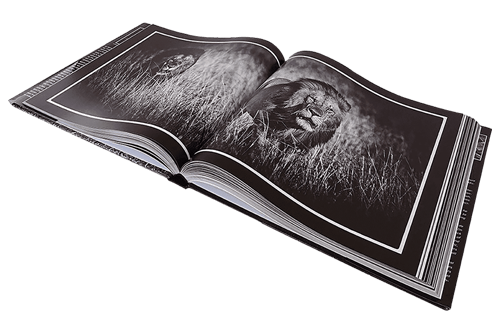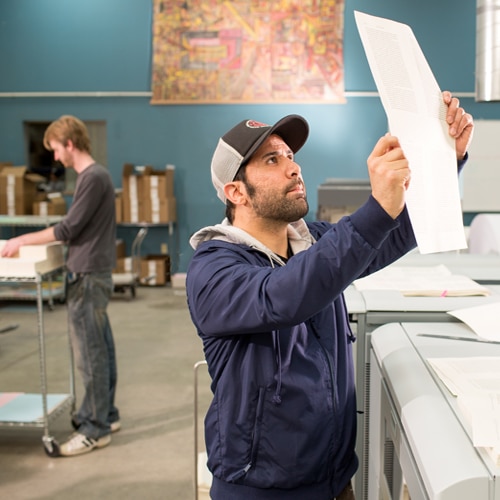Setting Up Files for CMYK Conversion in Your art book Prints
Comprehending the Process Behind Top Notch Art Book Printing for Art Enthusiasts
When it comes to premium art book printing, recognizing the ins and outs of the process can elevate your gratitude for the last product. As you discover the various components of art book printing, you'll reveal understandings that could transform your point of view on art conservation and discussion.
The Significance of Paper Choice in Art Book Printing
When it comes to art book printing, the selection of paper can make or damage the last product. You want your art work to beam, and the appropriate paper boosts color vibrancy and information. Think about factors like weight, texture, and surface; these elements substantially influence exactly how visitors view your work.
For circumstances, a heavier supply communicates top quality and resilience, while a textured finish can add deepness to photos. Smooth paper is superb for thorough recreations, enabling fine lines and subtle tones to appear crisp.
Don't forget the paper's illumination; a brighter sheet can assist shades pop, making your art a lot more captivating. You'll additionally wish to consider how the paper connects with inks and whether it can handle the printing process without contorting or bleed-through. Inevitably, picking the appropriate paper sets the stage for your art, guaranteeing it catches the target market's attention equally as you pictured.
Selecting the Right Inks for Vivid Recreations
Picking the ideal inks is simply as vital as selecting quality paper to accomplish dynamic reproductions in your art book. When you're publishing art work, you desire shades that pop and precisely stand for the original item. Choose for inks with a high pigment concentration; these often tend to produce richer and more saturated shades.
You might consider making use of archival inks, which stand up to fading gradually, guaranteeing your art book remains as striking as the day it was printed. If you're dealing with photographs or electronically developed art, pigment-based inks can offer a wider color gamut, improving information and deepness.
Do not forget about the finish! Matte and shiny inks can drastically alter the look of your art work, so think of the look you're intending to accomplish - art book. Eventually, the ideal ink choice complements your paper option, developing a stunning aesthetic experience for your visitors
The Role of Shade Management in Print Quality
Color monitoring plays an important duty in achieving high print high quality for your art book. It assures that the colors you see on your display convert accurately to the published page. Without efficient shade management, your vivid artworks might show up plain or altered, weakening your innovative vision.
To start, calibrate your monitor routinely. This action helps maintain consistent shade depiction. Next off, use shade profiles tailored for your printer and paper kind. These profiles direct the printer in recreating colors properly, minimizing discrepancies between digital and published variations.
When you prepare your documents, take into consideration utilizing a color room like Adobe RGB or CMYK, depending upon your printer's specs. Constantly evidence your work, also; an examination print can expose any type of prospective shade issues before the final run. By prioritizing shade administration, you guard the integrity of your art, assuring your audience experiences it as you intended.

Understanding Different Binding Methods
Attaining the ideal try to find your art book surpasses color management; binding strategies additionally play a significant role in its general discussion and toughness. You have numerous choices to evaluate, each with its very own unique attributes.
If you're aiming for a specialist feel, instance binding supplies a durable option with a difficult cover, perfect for showcasing your art work. On the other hand, best binding supplies a flexible spine while keeping costs down, making it a preferred choice for softcover publications.
Spiral binding permits your art book to lay level, which is terrific for presenting images without blockage. At the same time, saddle stitching is perfect for smaller brochures, giving a tidy coating without the mass.
Ultimately, the binding method you choose should show your imaginative vision and exactly how you desire readers to engage with your job. Make certain to consider these options very carefully to achieve the most effective outcome for your project.
The Effect of Print Dimension and Design on Discussion
While the option of print size and design might appear secondary to material, they substantially affect exactly how your art work is regarded. The dimensions of your prints can either enhance or diminish the impact of your pieces. Bigger prints can attract viewers in, allowing them to appreciate intricate details, while smaller layouts might need even more intimate interaction.

Preservation Methods for Lasting Art Books
To ensure your art publications stand the test of time, it's vital to apply effective preservation methods. Beginning by keeping them in a cool, completely dry atmosphere, far from straight sunlight and humidity. This avoids fading and warping, maintaining your web pages undamaged. Use acid-free storage space boxes or safety sleeves Homepage to protect them from dust and physical damages.
When managing your publications, always wash your hands or wear cotton gloves to prevent oils and dirt moving onto the pages. Stay clear of bending or creasing the spinal columns; instead, utilize book supports when presenting them.
For added protection, take into consideration spending in archival-quality products for any fixings or enhancements. Frequently check your collection for indications of wear or damage, addressing concerns promptly. By complying with these straightforward techniques, you can ensure your art publications stay vibrant and easily accessible for years to come, preserving their appeal and worth for future generations.
Teaming up With Printers for Ideal Outcomes
When you prepare to print your Full Article art book, selecting the right printer is important to accomplishing your vision. Clear interaction regarding your assumptions and needs will aid ensure that both you and the printer get on the same page. Allow's explore just how to make this collaboration as seamless and effective as possible.
Selecting the Right Printer

Reliable Communication Methods
Effective interaction is vital for transforming your art book vision into reality, specifically when teaming up with printers. art book. Beginning by plainly outlining your task's objectives, consisting of layout aspects, recommended products, and any certain printing methods. Do not think twice to share your ideas and references; this aids the printer comprehend your visual
Be open to feedback, as printers often have beneficial understandings that can enhance your task. This partnership will guarantee that your art book fulfills your expectations and radiates in its final form.
Regularly Asked Concerns
What Prevail Blunders to Prevent in Art Book Printing?
When printing your art book, prevent usual mistakes like poor resolution photos, incorrect shade accounts, and overlooking web page layout. Do not forget to check and confirm information to verify your final item fulfills your assumptions.
Just How Does Digital Printing Differ From Typical Printing Methods?
Digital printing utilizes digital data to create prints directly, permitting quicker turn-around and customization. In comparison, traditional approaches include physical plates, which can be taxing and less versatile for little runs or distinct styles.
What Is the Typical Turn-around Time for Art Book Printing?
The typical turn-around time for art book printing differs, but you can anticipate it to take anywhere from a few weeks to a number of months. Factors like complexity, quantity, and printing approach all influence this timeline.
Can I Print a Restricted Edition Art Book Financially?
You can publish a limited edition art book economically by picking cost-effective products, optimizing print runs, and utilizing electronic printing options. Mindful planning and budgeting will certainly help you accomplish top quality without spending too much.
What Are the Environmental Considerations in Art Book Printing?
When considering art book printing, you should think of green materials, lasting inks, and energy-efficient processes (art book). Picking regional printers can likewise minimize your carbon impact, making your job both beautiful and ecologically responsible